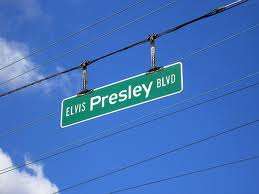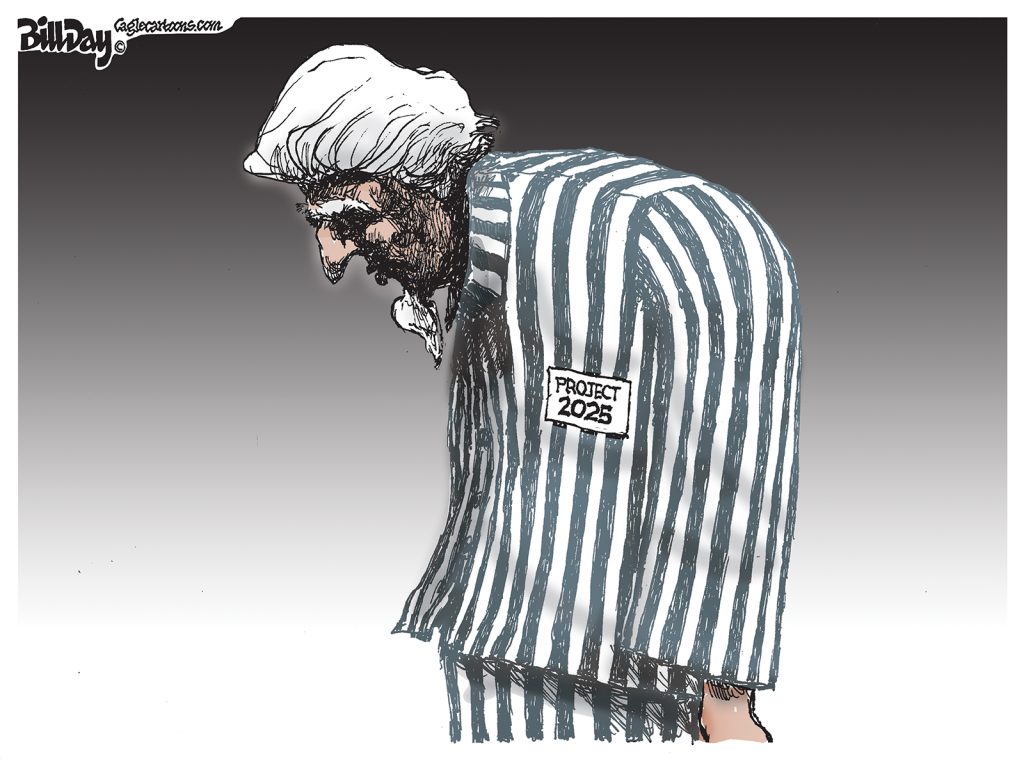When $50 million is put on the table, there are always a lot of competing interests for it.
That was certainly the case with the TIGER (Transportation Investment Generating Economic Recovery) grant in Memphis. The funds come from the Obama Administration’s stimulus plan, and despite varying interests and intense lobbying, the City of Memphis called it right: It supported the funding for Whitehaven.
While the most well-known beneficiary for the improved three-mile stretch of Elvis Presley Boulevard is Graceland and it was the “hook” leveraged for government support, the attention to Whitehaven is the smart choice. At a time when the political tendency is to spread money over a whole city for maximum effect, it’s much smarter for Memphis to identify areas like Whitehaven that still have assets that give it the potential for rejuvenation and economic growth.
The hard, albeit unpleasant, reality is that there are neighborhoods whose odds in coming back are slim to none. It doesn’t mean that we completely abandon them, but it does mean that we have to be judicious and strategic with budgets already stretched thin. It requires some tough choices and it demands political courage, and just as other cities are wrestling with their shrinking, we have no choice but to do the same.
The Fight Worth Having
It was January, 2007, when we first blogged that Whitehaven needs to be a top priority for our entire city. If Memphis is worth fighting for, there is no battle line more important than Whitehaven. The city undermined Whitehaven’s future with its long-time disregard for planning as a result of swallowing developer’s claims that all the apartment complexes were good for the economy and as a result of the city grabbing whatever federal money was available for affordable housing even if it was ultimately a detriment to the neighborhood.
Whitehaven has so much going for it. It has engaged leadership, good housing stock, key institutional anchors, involved neighborhood associations, and committed businesspeople, but it needs government investments that strengthen its infrastructure, reward minority businesses, reinvest in its neighborhoods, and unleash confidence that things can change.
The Elvis Presley Boulevard Revitalization Program certainly addresses the purpose of the TIGER program: “preserving and creating jobs and promoting economic recovery, investing in transportation infrastructure that will provide long-term economic benefits, and assisting those most affected by the current economic downturn.”
Reporter Tom Charlier, in yesterday’s Commercial Appeal, wrote that the grant will begin by late 2013 and will “rebuild Elvis Presley Boulevard by relocating overhead utilities and installing landscaped or specially designed medians and new street lighting. It also would add or rebuild sidewalks, curbs and gutters and provide for upgraded crosswalks, shared vehicle-bicycle lanes and improved bus stops.”
Aerotropolis Connectivity
In addition to this grant, there’s also the interest by the aerotropolis project in connecting its work to improve the adjacent neighborhoods. It is right on target. There are some who suggest that aerotropolis should only be about roads and runways, but they miss the point that in this case, economic development and neighborhood redevelopment are opposite sides of the same coin.
Connectivity is the thread often ignored in stitching back together the fabric of Memphis. And yet, connectivity runs through Sustainable Shelby and City of Choice plans, and that’s why it should be part of every major economic initiative.
To do otherwise reduces the impact from programs like aerotropolis, but importantly, it sends the message to the neighborhoods adjacent to aerotropolis that its success is also theirs. To do otherwise is to repeat the mistakes of the 1980s when federal funding to revitalize neighborhoods was spent on sidewalks and street pavements. It made for the incongruity of pristine infrastructure while houses decayed and businesses were abandoned.
It’s encouraging that the people working the hardest to make sure the aerotropolis concept is more than a marketing hook understand this. The committees are working to answer the question that we asked four years ago: How do we create an aerotropolis in Memphis using the existing airport as its center but created in a way that produces higher value for the neighborhoods and commercial corridors?
Credit’s Due
Speaking of the airport, they deserve credit for the planting of more than 2,000 trees as part of the beautification and landscaping project that is under way on Plough Boulevard, the primary entry and exit point for MEM. The planting of street trees to beautify Memphis – and to convince MLGW to allow them – was a recommendation of Sustainable Shelby, and it’s commendable that on this issue, the airport is leading the way.
All of this makes for an important start, but it is just the start. For Whitehaven to succeed and become an economic anchor for Memphis, there must be continued attention and additional investments.
Finally, here’s the most encouraging thing of all: Memphis City Engineer John Cameron said this project will transform this stretch of Elvis Presley Boulevard into a “complete street.” Imagine, we have a city engineer that even uses the term, complete street, much less seeks it. It’s the philosophy that “ensures that transportation planners and engineers consistently design and operate the entire roadway with all users in mind – including bicyclists, public transportation vehicles and riders, and pedestrians of all ages and abilities,” according to the National Complete Streets Coalition.
“The streets of our cities and towns are an important part of the livability of our communities. They ought to be for everyone, whether young or old, motorist or bicyclist, walker or wheelchair user, bus rider or shopkeeper. But too many of our streets are designed only for speeding cars, or worse, creeping traffic jams.”
Poster Child
In his 2009 campaign platform and reprised this year, Mayor Wharton said his administration will act on “a ‘complete streets’ philosophy for all transportation plans and neighborhood redevelopment programs so every street plan has to include alternative transportation options for safe, attractive, and comfortable access for pedestrians, bicyclists, motorists, and public transit.”
It appears that Elvis Presley Boulevard will be the poster child for how successful the promise of complete streets will be translated into the reality of complete streets. We’re optimistic about the results.



Memphis should form a TIF / TDZ in and around Elvis Presley Boulevard.
I think the recession has exposed weaknesses within TIF structuring. (In fact, I know it has. A quick Google search reveals literally hundreds of stories about communities struggling to repay bondholders.) When property values are down as they are now, and property tax collections are down as they are now, the threat of default increases exponentially.
I agree with business per the TIF and Anon has a strong point as well. Building on Anon’s point, I would think the present would be the ideal time to create a TIF district. Tax collection projections performed now would incorporate recession driven data and thus would reflect a more conservative financial windfall when compared to those created just prior to the economic slump. Better to err toward a conservative estimate when dealing with public finances.
Drawing on the TIF comments and the topic of the post- business improvement districts can be used to fund all sorts of improvements and additional services. One of my favorites is a program in NYC that employees ex-felons as a method to provide additional street cleaning and removal of refuse from sidewalk trash cans. Considering the investment in public infrastructure that is being made along EP Blvd and the potential for pedestrian activity along this same stretch, perhaps this is one way in which we could utilize TIF funding.
Stabilizing Whitehaven is extremely important for other reasons beyond the scope of the post. The trend both in Memphis and nationally is towards a greater disparity and segregation by relative affluence. The most stable neighborhoods- and I define stable as lacking change which does not necessarily denote health or quality of life- are those that are dominated by wealth and extreme poverty. The “middle class” neighborhoods are the most vulnerable to decay and loss of value. This can be attributed to numerous factors. Similarly, the middle class fuels an enormous degree of local (and national) sprawl. It is important for the city to prove that this trend can be bucked by creating a stable middle class neighborhood with a healthy mix of uses and a range of “buy-in” costs.
that area has been a dump for years, why put more lipstick on that pig ??
except maybe the airport, which is an eyesore inside and out
You’re an idiot. Intellectually, emotionally, socially, spiritually.
You say don’t “completely abandon” the too-far-gone neighborhoods and I agree. But I’ve always been troubled by this triage approach where we ignore neighborhoods with little or no assets and focus on those that show promise from investments.
The FHA mortgage insurance program began in 1934 and with its guidelines for approving neighborhood eligibility, helped banks redline areas of our cities that cut off investments for uplift.
The Community Reinvestment Act of 1977 was enacted to pressure banks to lend in low and moderate income neighborhoods in an attempt to eliminate redlining. Local governments were to respond with public investments to complement the private lending.
While I agree with everything you say about Whitehaven and Elvis Presley Blvd., I still have this nagging feeling about equity when we prioritize investments for middle income areas and in effect “redline” the truly disadvantaged.
I believe we should have a comprehensive physical, social, economic and organizational policy toward every neighborhood in Memphis so that projects like Elvis Presley Blvd. don’t seem so ad hoc.
FH- Agreed re: the comprehensive policy. The question centers on the expenditure of limited resources. Spread evenly, investments are not likely to yield maximum effect. What we can do is ensure that the basics- safety, existing infrastructure and access to education- do not deteriorate beyond their current conditions in the more distressed neighborhoods until we can adequately address what will undoubtedly be a far more significant investment and intervention program when compared to middle income neighborhoods.
It stinks and we both know it. I’m just not sure how we can spread the focus without losing the potency of the effort.
Of course, that is not to say that the most impoverished neighborhoods are being ignored. The HOPE VI program is focused on rebuilding those neighborhoods most significantly affected by the effects of concentrated poverty.